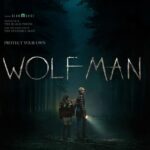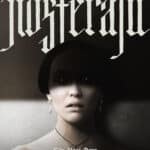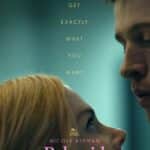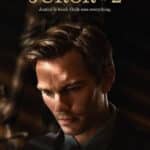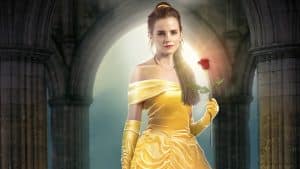
Beauty and the Beast
Beauty and the beast has ancient origins. Narrated by Apuleius, the myth of Cupid and Psyche takes literary form in the collection of Giovanni Francesco Straparola novels ( “The pleasant night”, 1550), up to the elaboration of canonical Jeanne-Marie Leprince de Beaumont (1740), which reduced version of Gabrielle-Suzanne Barbot de Villeneuve and transforms it into modern fairy tale that we all know. Starting dreamlike adaptation of Jean Cocteau, spanning the Oedipal component of the original fairy tale, Beauty and the Beast generates translations, betrayals, reinterpretations, giveaways and even a ‘reading’ Live erotic in 1977 by Luigi Russo. With each new transpose the question is repeated tricky: how to handle the inheritance?
In 1991, Disney responds with a conscious animated film of cultured origin. Unlike The Little Mermaid, in which the Andersen fairy tale is a mere literary inspiration, Beauty and the Beast it maintains the plot and presents a gallery of objects and characters with a strong symbolic element which light up the initiatory journey of Belle. Writers, producers, technical animation, all seem bewitched by the exemplary force of this fable translated with care by the Disney through the characters and the bodies, movements and choreographic geometries. Inside shots built as in cinema from life, Gary Trousdale and Kirk Wise introduce sensual heroine, full of life and lover of reading, an obvious tribute to Katharine Hepburn Little Women. In a combination of fable and technology, computer graphics works the miracle of a waltz that has an extraordinary adherence to reality and produces the spark of eroticism that makes the passion of Fine for deep and complex beast. Twenty-six years later, Disney opens the dance and reopens the impressive ballroom, realizing the live-action version of its animated masterpiece. From the décor to the characters, through the costumes and the music, Beauty and the Beast Bill Condon seems to follow the animated drawing leading us by the hand and on the steps of Fine castle of a prince that vanity condemned to live recluse. In the teaser, a family music and melancholy opens the door of an abandoned and isolated place. Belle looks furtively touches a red rose, symbol of beauty and magic of this love story. The exciting alchemy of a beautiful beast. Directed by Bill Condon, The Beauty and the Beast boasts an exceptional cast. To contend for the hearts of Fine, embodied by the grace of Emma Watson, will be Dan Stevens, Prince who learned manners in Downton Abbey and fall in love at the heart of Belle, and Luke Evans, charming Archer in The Hobbit will miss the heart of Beautiful.
Between the Beast and Gaston, between the village and the castle, there is the path of emancipation of a girl tied to her father by a fusion feeling from which the emancipated love. Encircle Ewan McGregor and Stanley Tucci, Emma Thompson and Ian McKellen, who lend voice to chandeliers and grand pianos, teapots and clocks, chansonnier improvising the music of Alan Menken, who for the occasion ‘rehabilitates’ the censor in 1991 in Gaston hit. To the famous composer, author of the soundtrack and arias-lighthouse that have enchanted the generation of the nineties ( “The Song of Gaston”, “It’s a story you know”), Bill Condon asked to write three new songs. At ease with the musical film (Dreamgirls) and with the fantastic romance (Twilight – Breaking Dawn), the author could repeat the successful animated and dubbed the Baroque version of Christophe Gans, played by Léa Seydoux and Vincent Cassel, in a curious balance between emotions and distance.
The rising sentiment between a young woman and a prince changed into a beast emphasizes, just as in a morality tale, the value of inner beauty and the need to go beyond appearances. The reason for the monster in Prince metamorphosis through the evidence of love being loved is common to many stories, but the story of Gabrielle-Suzanne Barbot de Villeneuve can not be reduced to romance, his sense exceeds the amorous intrigue. Beauty and the Beast is above all a journey of initiation that solves the irreducible duality in a harmonious meeting of its multiple dichotomy: bestiality / beauty, body / spirit, masculine / feminine, light / dark, sun / moon. It’s still. The tale does not fail then to assign the rightful place to the essential figure of the father of Belle, less torque visible Beautiful / Beast but just as essential to the global understanding of the text. With the parent duality becomes trinity. Deeper encounter love, larger than the Oedipal scenario, the triad illustrates the three faces of the human being: body, mind, intellect. The archetypal energy of the story is no exception to the team Disney, where the father’s role is significant. With a view to multiple readings, and without claiming to own interpretation ‘right’, we groped a symbolic reflection of Beauty and the Beast as the adaptation of the film made by the Disney studio in 1991. But first things first. And not necessarily in order of appearance.
Fine embodies the soul, understood in a spiritual and not religious sense. Belle is the higher intuition irreducible to the phenomenal world in which he lives but from which rises to tend to the absolute. From the very first song ( “Bonjour”), the protagonist declares to feel trapped in a village where the inhabitants, taken from their everyday worries, living ordinary lives. Belle wants an extraordinary, a life like the one that reads in novels, open ports on the spiritual world that would like to share but the village multiplies the obstacles to reading. Belle does not give up and sitting the test fountain in instructing a sheep flock. The meaning of ‘framework’ is eloquent anticipates the entrance of Gaston, bully that reigns over the village and is reflected in a silver pan, symbol of the appetites of the character material. Its crude marriage question makes imperious desire height of Fine launching his appeal to the universe. And the horse Philippe replied, leading her to the castle, where his transcendence of desire is fulfilled. Prisoner in the castle there is Maurice, Belle’s father, inventor who embodies the intermediate level of consciousness, placing itself between the spiritual attitude of the daughter and the purely terrestrial animal nature of the beast. Maurice allows Belle to realize the dream, to leave behind a purely material world. It is he who puts first the forest, the space where begins the initiatory path of Fine. On arrival at the castle, the deep unconscious place that immediately reveals his attitude, Maurice tries to understand how Tockins, the clock symbol of time. His defeat, allegory inability of science to understand the unknowable (hence the origin of time, of time, of the world), reaffirms the company’s impracticality to the intellect without intuition (Belle). His then broke into the tavern and the unsuccessful attempt to call the village to help Belle is once again revealing the banality of the world outside.
A world so sunk in their own materiality dull that it can not withstand the authentically human impulses (Maurice is ridiculed and rejected, literally thrown out of the club). Belle and her father are incapable of reacting in the face to the village that foolishly decides to set fire to the castle. Spirit and intellect remain in short powerless without the life force embodied by the Beast. He is the body including the human instincts and its sizing material in the widest sense. Become all-encompassing, and deprived of the limit, the meat on the fable download a sheer brutality and makes the Prince a single creature bestiality. His devilish appearance spreads a cold wind, his shadow massive and horned reflects the evil passions which deform his soul and condemn instinctivity. The brown coat and a red hood exalt violence deeply rooted in him. Fragile hope, his eyes, windows of the soul, keep the blue of rebirth. And in that look Belle looks and fishing the vital leap, corrupted but not cruel, the Beast learns to educate its strength, to use it when and where it is needed (against wolves and against Gaston), to direct it in a positive way, by conciliating with his own humanity and start leaving Belle and her father. With that gesture the Beast saves the spirit (Belle) with whom he will live in harmony after the winter. The season that slows the world and allows them to gradually recover the human abilities, satisfying the first needs of the soul (resume reading). The love between Belle and the Beast expresses the need for each of us to accept their own shortcomings. The Beast welcomes what the spirituality of Fine representing his otherness, Belle agrees to love the Beast as deeply else. Similarly the relationship between Belle and the Beast does not mean the disappearance of the father but rather the end of its exclusivity. The tale plays then the awakening of consciousness, giving the epilogue the three components being. And maybe that’s the secret of the success of The Beauty and the Beast. A thousand-year history and universal being fulfilled. A woman and a beast capable of assuming fully the polarity of their feelings.



